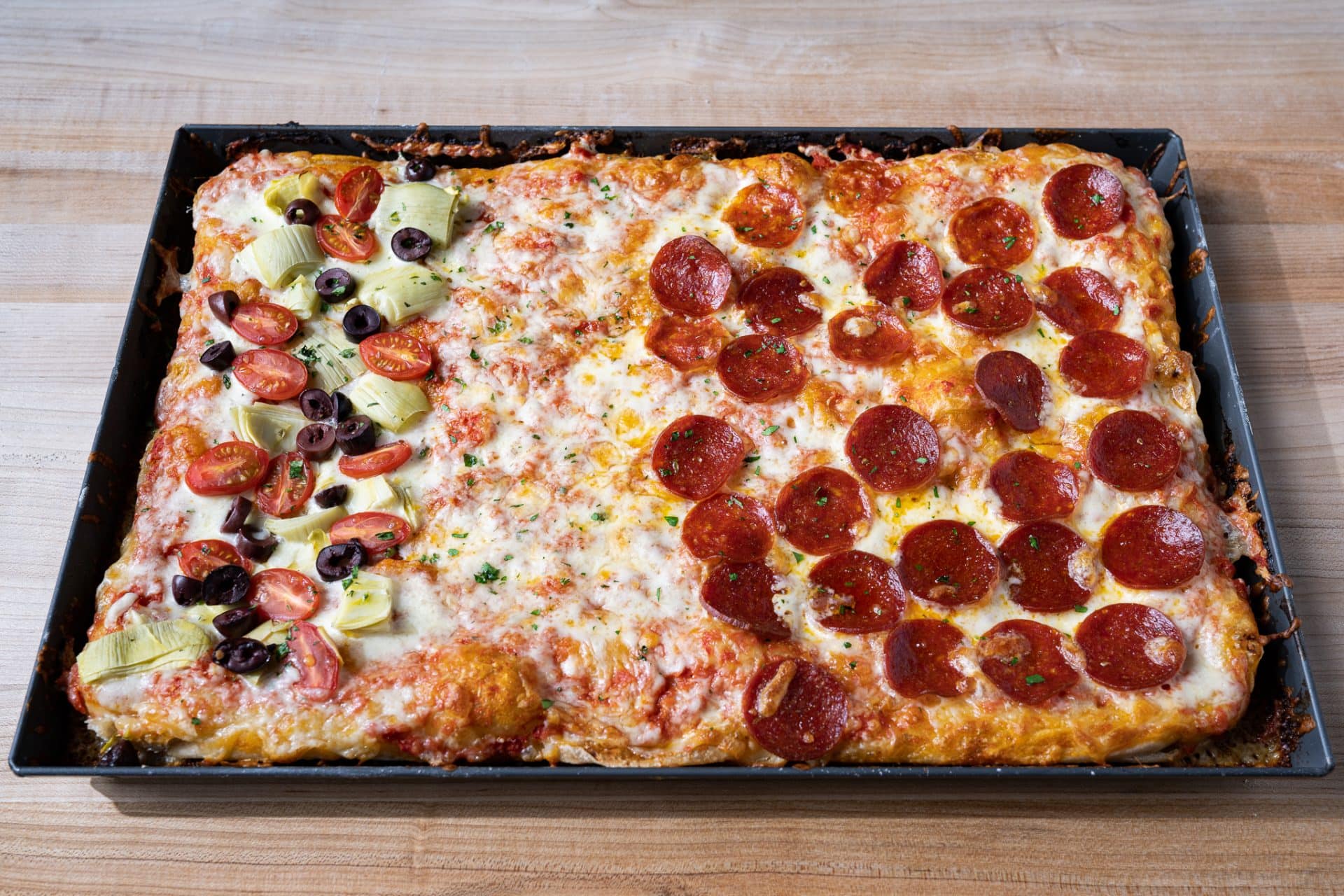Welcome to the authentic and delicious world of ItalianStreet Food (Cibo da Strada)! Italian street food came through the long way of history, this deep rooted food culture is very famous, affordable, and very diverse in its way of culinary culture. As you know slow living is a lifestyle slogan, the street food has a very important connection to the local community in its bite. So it's a combination of regional tradition , community, and fresh ingredients. It carries centuries old history, from the simple meals served to ancient Roman workers to the specialized, high-quality snacks sold by modern artisans today.
The landscape of Authentic Italian Street Food Culture
As you know! In Italian culture, "slow living" is a deeply rooted philosophy as "la dolce vita" (the sweet life) and the "Vita Lenta" (slow life). This prioritizes by emphasizing quality over quantity, marvelous daily moments, and prioritizing relationships and well-being over constant productivity.
As we know, slow living is an Italian culture; the dining experience is very important in Italian food culture. So the Italian street food is a reflection of their culture and heritage, which should be experienced through each bite.
- A Reflection of Regional Identity: Italian food is diverse in its culture; each region has its own must-try speciality. This varies from the fried rice balls of Sicily to the unique offal sandwiches of Florence.
- A Connection to History: All the variety of dishes has connections to past centuries. From the ancient times onward, many people started experimenting with food as a way how the food affordable and quick to eat for the working-class population. Each recipe comes from generations with great care and love to maintain its original characteristics.
- Simplicity and Quality: The authenticity they maintain through a simple principle that always uses fresh and locally produced ingredients. So the importance of ensuring authenticity, quality, and deep flavors is the highlight of Italian food.
- A Communal Experience: Eating street food is considered a social activity, which is often enjoyed with friends while exploring a market or square; sometimes it's a natural part of daily life. Also, this is a way of connecting to local people.
- Connect Past and Present: This culture is connected to history by using ancient historical recipes and techniques with modern creativity. This is how the culinary tradition is truly well-connected to its roots.
Star Street Food: The Magic of Roman Pizza al Taglio
One of the most famous examples of Cibo da Strada is Pizzaal Taglio (pronounced TALL-yo), or "pizza by the cut," a specialty of Rome.
This rectangular pizza has an incredible texture:
- It has a thick, airy, focaccia-like crust that is surprisingly light and bubbly on the inside.
- The bottom crust is known for being perfectly golden and crispy.
- It is always sold by weight and cut into squares or rectangles, making it a perfect, quick, customized meal.
Simple Pizza al Taglio Recipe (Classic Margherita Style)
The true secret to great Pizza al Taglio is based on how the dough is prepared.
Ingredients
For the Dough
- high protein bread flour - 2 cups.
- Luke warm water - 1.5 cup
- instant dry east - 1 teaspoon
- Sea salt - 2 teaspoons
- Extra Virgin Olive Oil - for the dough and pan
For the Sauce & Toppings (Classic Margherita Style)
- Tomatoes: 28 Oz peeled San Marzano tomatoes, crushed by hand.
- Salt - One Pinch.
- Oregano - One Pinch
- whole-milk mozzarella shredded -1 LB.
- Fresh basil leaves.
Instructions (The Dough is the Star!)
1. Mix the Wet Dough
a. In a large bowl, mix the lukewarm water and yeast and keep it for 5 minutes on room temperature for 5minutes until a layer of foam came.
b. Then add salt and flour and mix with either a hand or a spoon to make the dough a sticky and loose consistency.
c. After drizzling some olive oil on top of the dough, wrap the bowl using plastic and a weight for 30minutes.
2. Stretch and Fold (Building Air)
The key to that airy crust is the "stretch and fold" method, which replaces kneading:
a. Gently oil your hand.
b. Grabbing the edge of the dough, do some stretching and fold it center until the dough becomes smooth.
c. Again, turn the bowl 90 degrees and repeat the same stretch and fold. Repeat this process 4 times.
d. Again, cover the dough and rest for 30 minutes.
e. Repeat the 3rd and 4th steps again and continue this for 1 and a half hours, then the dough becomes smooth and stringy.
3. The Long, Slow Rise (Flavor Time)
a. Transfer the dough to a lightly oiled container.
b. Refrigerate it for 18 to 24 hours. This long, cold rest is essential for developing the deep, wonderful flavor and making the crust super light.
4. Pan Prep & Final Proof
a. 2 hours before baking, take the dough out of the fridge to warm up (this is called "proofing").
b. Generously oil a 13x9-inch (or similar size) rectangular baking pan. This heavy layer of oil is what gives the bottom a famous golden crunch.
c. Gently lay the dough in the pan. Use oiled hands to gently push and stretch the dough toward the edges. If it resists, let it rest for 10 minutes and then continue stretching. Be careful not to pop the air bubbles!
d. Once the dough is mostly stretched, let it rest, uncovered, for 30-45 minutes while your oven preheats.
5. Bake It!
a. Preheat your oven to the highest setting it goes (usually 500°F or 260°C).
b. Add toppings: Drizzle a little olive oil over the dough. Spread a thin layer of your crushed tomato sauce and a pinch of salt/oregano.
c. First Bake: Place the pan on the lowest rack of the oven. Bake for 10–12minutes. (This sets the crust).
d. Remove the pan. Quickly add the mozzarella cheese and any other non-meat toppings(like sliced mushrooms).
e. Second Bake: Move the pan to the middle rack. Bake for another 8–10 minutes, or until the cheese is melted and bubbly and the crust is golden brown.
6. Finish and Cut
a. Remove from the oven and immediately transfer the pizza from the hot pan onto a cutting board (a cooling rack works too).
b. Tear or sprinkle the fresh basil over the top.
c. Let it cool for just a minute or two, then use a pair of large scissors or a sharp knife to cut it into squares or rectangles.
d. Buon Appetito!
Conclusion: Why Italian Street Food is a Global Favorite?
People around the world love Italian street food because it uses different flavors that are in a balanced format. They have amazing taste and can be consumed very quickly.
a. It's Quick and Convenient: For people on the move, street food offers a delicious break without the wait of a traditional sit-down restaurant.
b. It's Affordable: It provides a much cheaper option than a full restaurant meal, making it truly accessible to everyone, from tourists to local workers.
c. It's Deeply Authentic: When you buy street food, you are getting a direct, unpretentious connection to the region's culinary history and eating exactly what the locals have enjoyed for generations.
FAQs
1: What is the meaning of “Cibo da Strada”?
“Cibo da Strada “is an Italian term for street food. The meaning is any quick and ready-to-eat food sold by small shops or stalls. This can be eaten while standing or walking.
2: Whether Italian street foods are only pizza and pasta?
No. There is are incredibly diverse variety of food patterns available other than pizza and pasta. Some of the verities of Italian street food are fried rice balls (arancini), roasted pork sandwiches(porchetta), small skewers of lamb (arrosticini), and small Venetian appetizers(cicchetti).
3: What is the difference between Arancini and Supplì?
The above-mentioned names are 2 versions of regional fried rice balls. Arancini (from Sicily) are larger, often cone-shaped, and usually filled with ragù (meat sauce), peas, and mozzarella. Supplì (from Rome) are cylindrical, smaller, and traditionally filled only with rice cooked in tomato sauce and a center of mozzarella.
4: Is Lampredotto a popular street food?
Lampredotto is a very popular Italian street food. But it's only available in Florence (Tuscany). This is a very unique and historical sandwich made with cow stomach, which is slow-cooked and served with a simple bun and a sauce.
5: Where is the best place to find authentic street food?
If you really wish to get authentic street food, you have to find a food stall or small food shop which arelocally owned vendors who are run mostly by family-run food stalls. This is available in historical places and busy market areas. The very long run local family-run food stores are best with quality and authenticity.
– Chithra Sooraj ( a Digital Marketing professional who loves to write)


